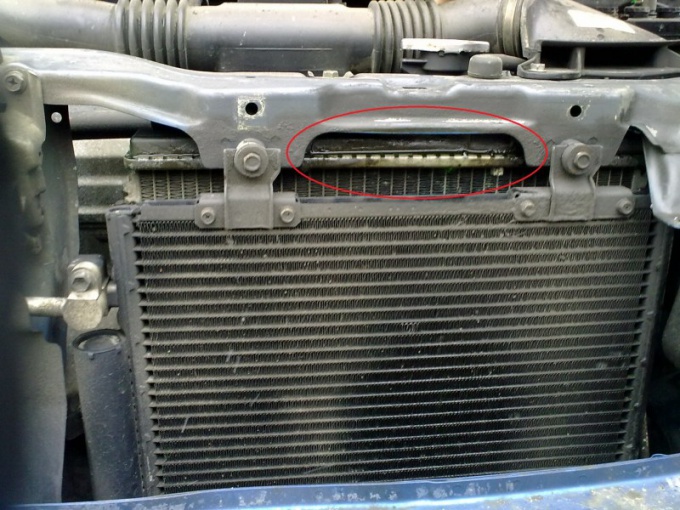You will need
- compressor;
- - polymer sealant;
- epoxy glue and fiberglass;
- - soldering iron, solder;
- rubber, clamps, vulcanizer.
Instruction
1
Inspect the upper part of the radiator. Leaks often appear in this place and are the result of cracking of the plastic parts of the radiator, near the attachment sites of the diffuser and the bracket that supports the cables of the accelerator. Sufficiently large crack can be "highlighted" color pigment of antifreeze. Finding such spots on the surface of the engine, look for a leak in the pump gasket or the thermostat. If the cabin is the smell of antifreeze, and sweat glass – inspect the heater core. If the coolant enters the cabin, the leak may be in the pipe of radiator and heater valve.
2
If the leak radiator has a place, but visually hard to detect, armed with the compressor. Remove the radiator and plug all the holes except one. Connect the pump to the hole and lower the radiator in a tub of water. Turning on the compressor, the bubbles of air released find the location of the leak.
3
Remember the old advice of experienced chauffeurs is to treat leaky radiator dry mustard, adding it to the coolant. In fact, this method has a significant drawback – the mustard powder accumulates in clumps and clogs the tubing of the cooling system. A similar, but more modern method involves the use of a specialized sealant. Purchase the polymerized sealant for repair of radiators and cooling systems.
4
The technology is simple and affordable: add the product into the radiator according to the instructions on the can, start the engine and let it idle. All the leaks to heal themselves. Tip one: do not buy powdered sealants. The right product should be similar to stationery glue with uniform consistency. Tip two: if you find a leak located in the radiator tubes, the pinch off their instrument above and below the leak to reduce the cracks. This method of repair is carried out without removing the radiator, but useless to correct major cracks and crevices.
5
Aluminum radiator seal. To do this, drain the antifreeze from the radiator and remove it from the car. Rinse it with plain water with strong pressure. Thoroughly dry the sink and degrease the damaged area. After that apply the crack with epoxy (cold weld), let it dry for 3-5 hours and install the radiator in place. For high-quality bonding use two-component adhesive based on epoxy. If the leak is larger than 1 cm, apply a patch of fiberglass and glue it with epoxy glue. Be sure to follow a few layers of glass, separately proKLIMA and drying each layer. When applied carefully expel the air bubbles.
6
Copper radiator fix by soldering or welding. Use for soldering or a special soldering iron with a capacity of at least 250 watts, a soldering copper or a high thermal capacity with a possibility of heating with a blowtorch. To do this, heat the repaired surface of the radiator and put on it a layer of molten solder. This method is quite time-consuming and complicated, and not recommended if you are not experienced in soldering or welding.
7
Leaking rubber hoses replace. If it is not possible to do this, cut a piece of rubber and fill the point gap, holding it with a clamp above the leak. Do not use the hose clamps made in China – they will not provide the desired effort crimping. Large gaps eliminate crude rubber and a vulcanizer.
